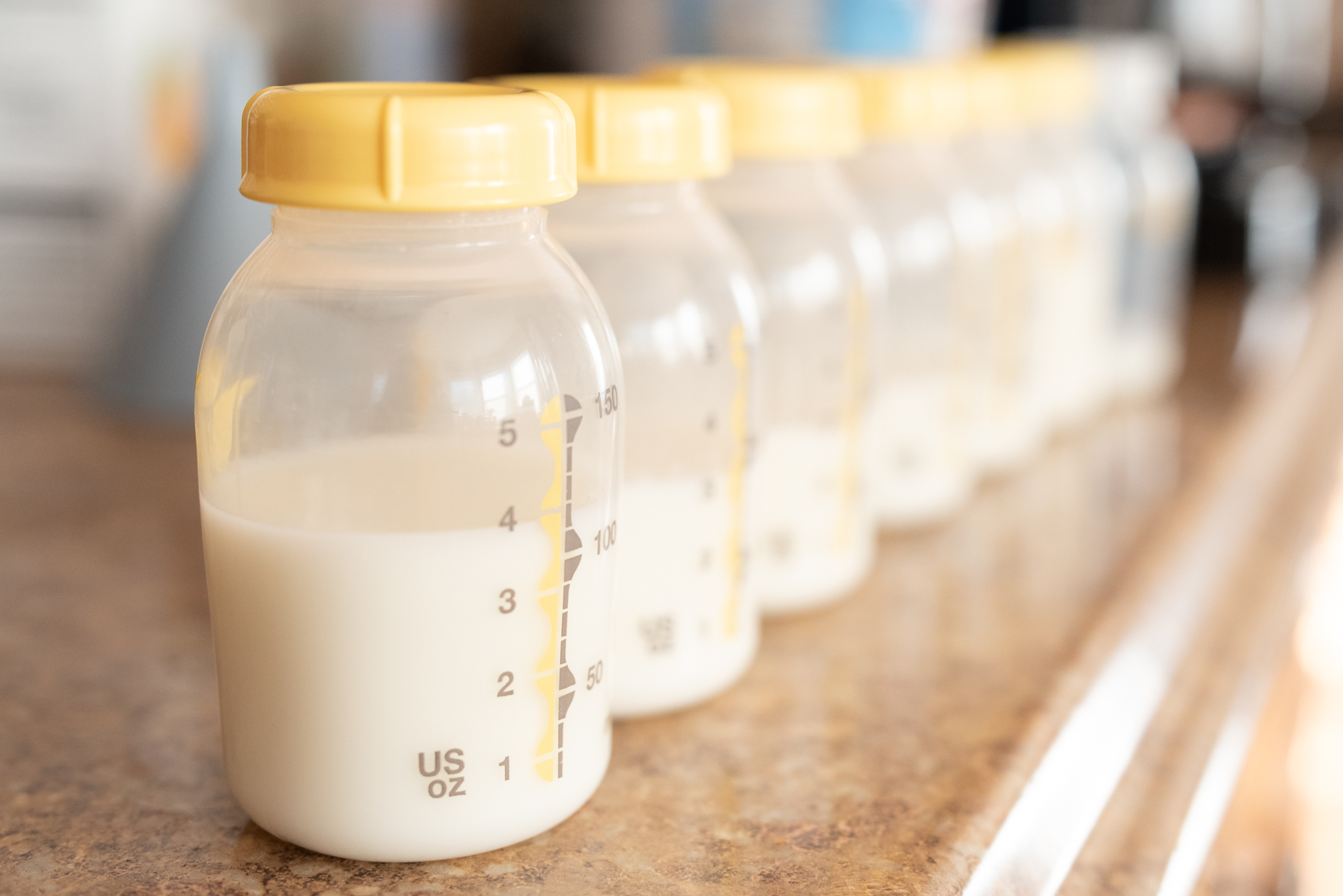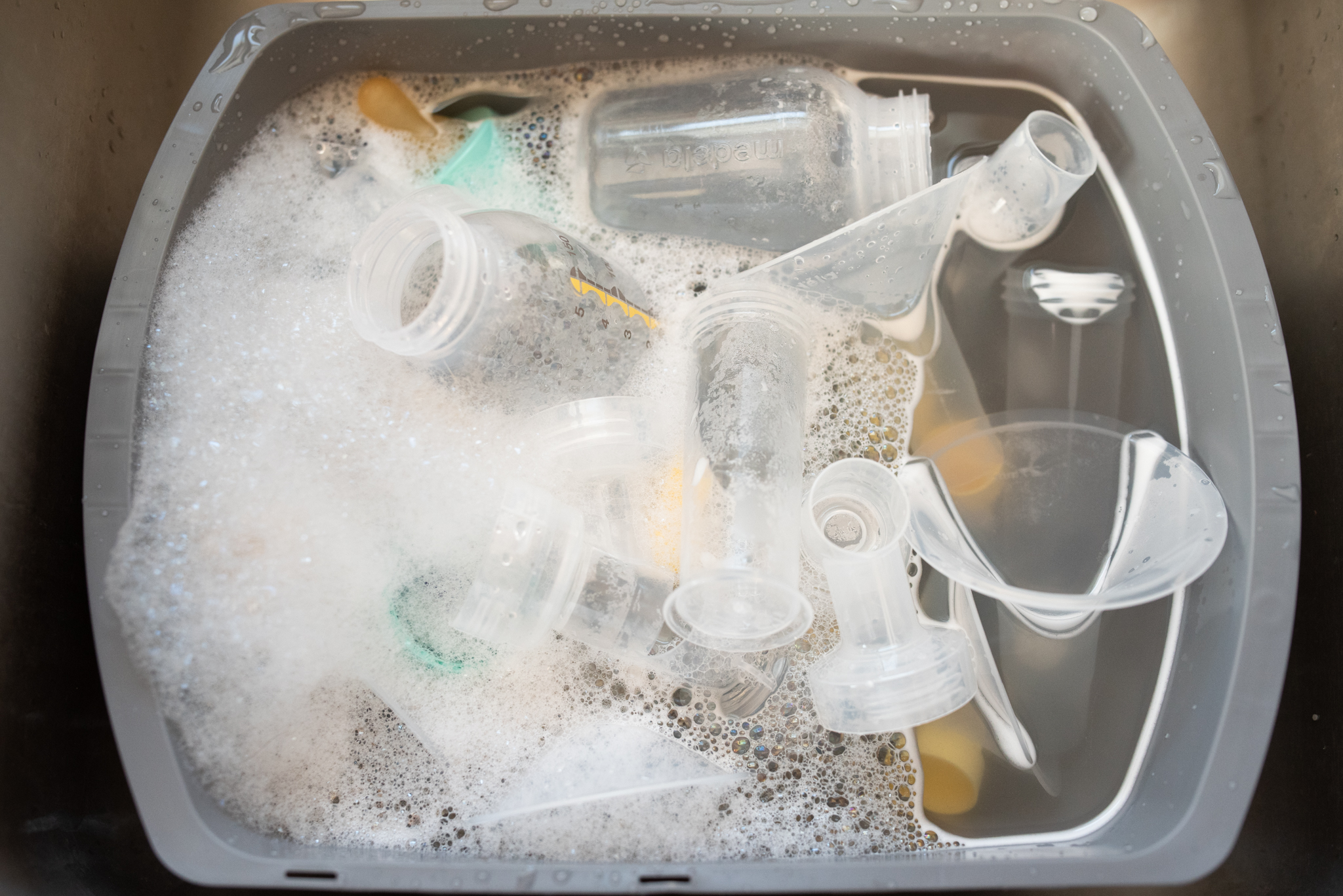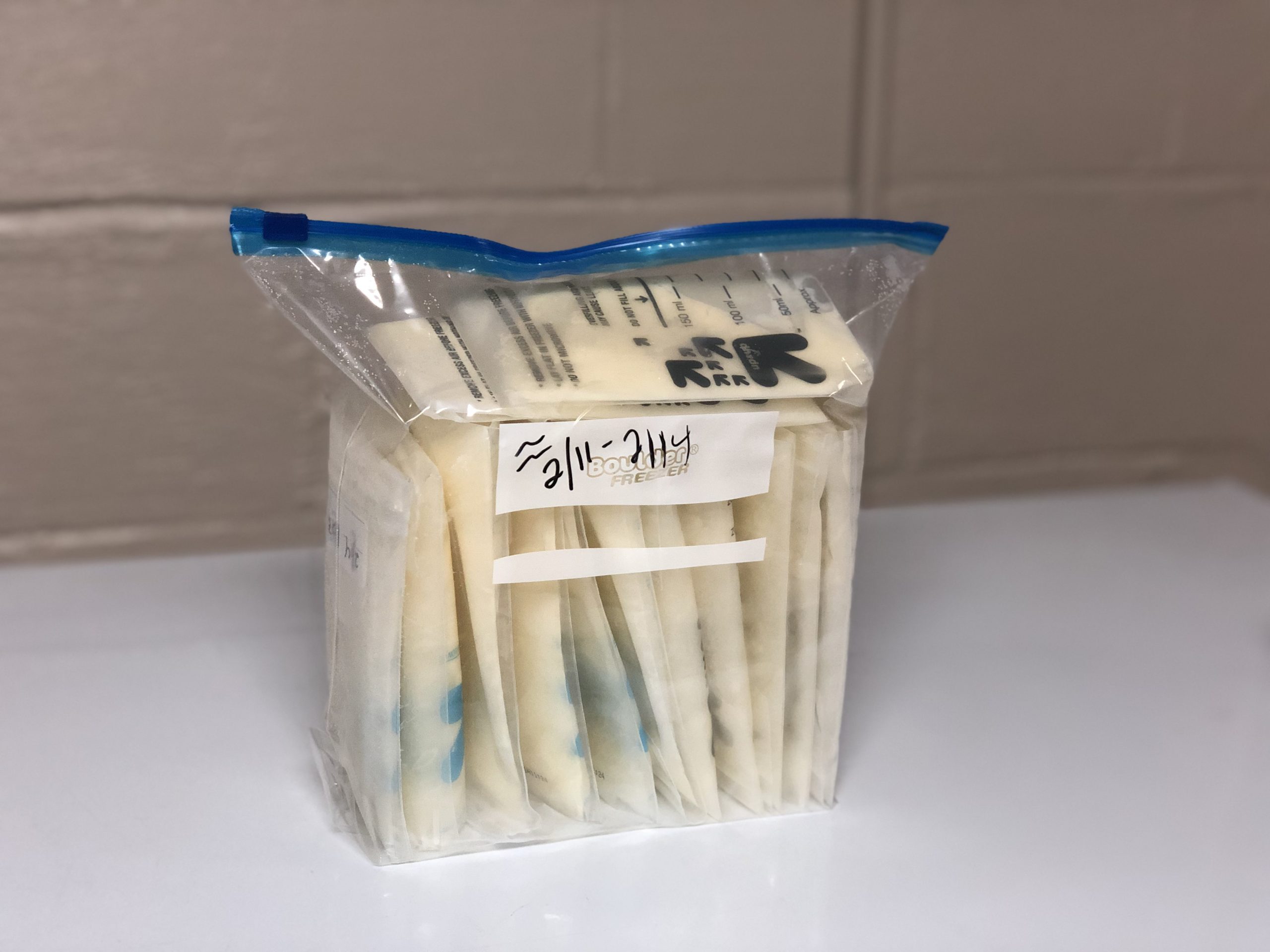I am just four weeks into my breastfeeding journey with my second child. With my first child, I made it 14 months as an exclusive pumper, also known as an EPer. It is a world of breastfeeding I didn’t know about until my son was born early and with jaundice and bottle-feeding was our beginning. Three years later, my second child was born late preterm. We were blessed with a great latch and good supply but she just wasn’t strong enough for a consistent feed to meet her needs, so my old friend the pump and I reunited. No matter your reason for deciding to pump– poor latch, low supply, being in the NICU, or just by choice– I have a few tips and tricks I have learned in my journey of exclusive pumping.
1. Invest in a Hands-Free Bra

As an exclusive pumper, investing in a hands-free bra was life-changing for me. Whether I decide to scroll Instagram, work on my computer, or even do a feeding, having my hands available while I’m tethered to the pump has made all the difference. I prefer the adjustable one that you can buy here.
2. Keep Extra Pump Parts on Hand

As an EPer you want to save time and sanity wherever you can since so much of it will be devoted to pumping sessions. The last thing you want to do at four a.m. when your babe is sleeping through the night but you’re building or maintaining your supply is to follow it up with a dish washing session. I currently have three sets of parts for my Medela PISA. I only have to wash parts and bottles three times a day instead of the eight it would be if I did it after each session.
3. Freeze Milk in Smaller Increments for Less Waste

Currently, my preemie is eating less than half of my output for the day. So that means we are storing about 25-30 ounces of milk a day. We refrigerate (I never mix room temperature and cold milk together in order to avoid bacterial growth) and then bag once in the morning and once at night. I store my bags in four-ounce increments to avoid waste when they are thawed. Next, we lay the bags flat in a storage container in our freezer. Once we have 10-12 flat frozen bags, we collect them and transfer to gallon ziplock bags in a breastmilk brick. They are then transferred to our deep chest freezer for longer storage. To find out how long breastmilk is good at room temperature, in the fridge, freezer, etc., click here.
4. Make Good Use of Your Session Time
One of the biggest adjustments to pumping the second time around is having another child at home. I am a stay-at-home mom and when I am home alone with both children, juggling pumping sessions and two kids can get overwhelming. To make the best use of the time when I have to get a session in, I try to connect with my three-year-old. I have him bring me a stack of books to burn through or he loves flipping through his Brain Quest cards or a Highlights magazine with me. It’s an intentional, carved-out time for the two of us. I feel less guilty and he has come to look forward to when it is time to pump because that is a little one-on-one time for him. (Baby is usually fed and sleeping at this point.)
5. Hydrate, Hydrate, Hydrate
The most important thing I have learned in my journey with exclusive pumping is how important water intake is. Breastmilk is made up of about 90% water, so I am assuming this is a part of it. I make it a goal to drink at least eight ounces of water at each pumping session. If your output is not where you want it, I would first look at your input of water. Are you drinking enough?
6. Prepare Healthy Snacks
It’s no secret that breastfeeding/nursing/pumping causes a huge increase in appetite. It takes calories to make calories, people! Have healthy snacks prepped and ready to go beforehand and enjoy during a session. One of my favorite go-to snacks to prep is sliced cucumbers and hummus. Have a favorite on-hand to fuel a healthy pumping session.
7. Do What Works Best for You
Find a schedule that works for you, your family, and your mental health. Pumping is a lot of work. You’ll need to pump 8-10 times a day or every two to three hours during the first 12 weeks (at least every time your baby eats) to build and maintain a supply. After 12 weeks, your milk supply should begin to regulate– at this time, some women can drop pumping sessions or spread them out further without losing ounces. This can mean maybe you don’t have to do that middle of the night pump when your baby is sleeping, but some women are unable to drop sessions without losing supply. This part is learning your body and sometimes takes some trial and error.
Currently, I pump every three hours. With my firstborn, at the end of my journey I was able to pump twice a day and still make more than twice as much as he was eating. When starting your pumping journey it’s great to have a goal in mind. Do you want to pump for one month? One year? Would you like to try to donate as well? Whatever your goal, let your support system know and work towards it. Keep in mind you can adjust for your well-being! Some suggestions for pumping sessions, schedules, and dropping pumps can be found here but every woman and her body is different.
While I am only four weeks into my exclusive pumping journey this time around, and still holding on to some hope that me and my preemie will be able to nurse, I recognize the benefits of being an exclusive pumper (able to donate milk, husband is able to participate in feedings, baby is getting benefits of breastmilk, etc.) and I try to focus on those more than the negatives (time spent and having to schedule around pumping sessions). As with everything, there’s ALWAYS good and bad to be found and I try to focus on the good. I hope these tips help you as you start or continue your pumping journey.










